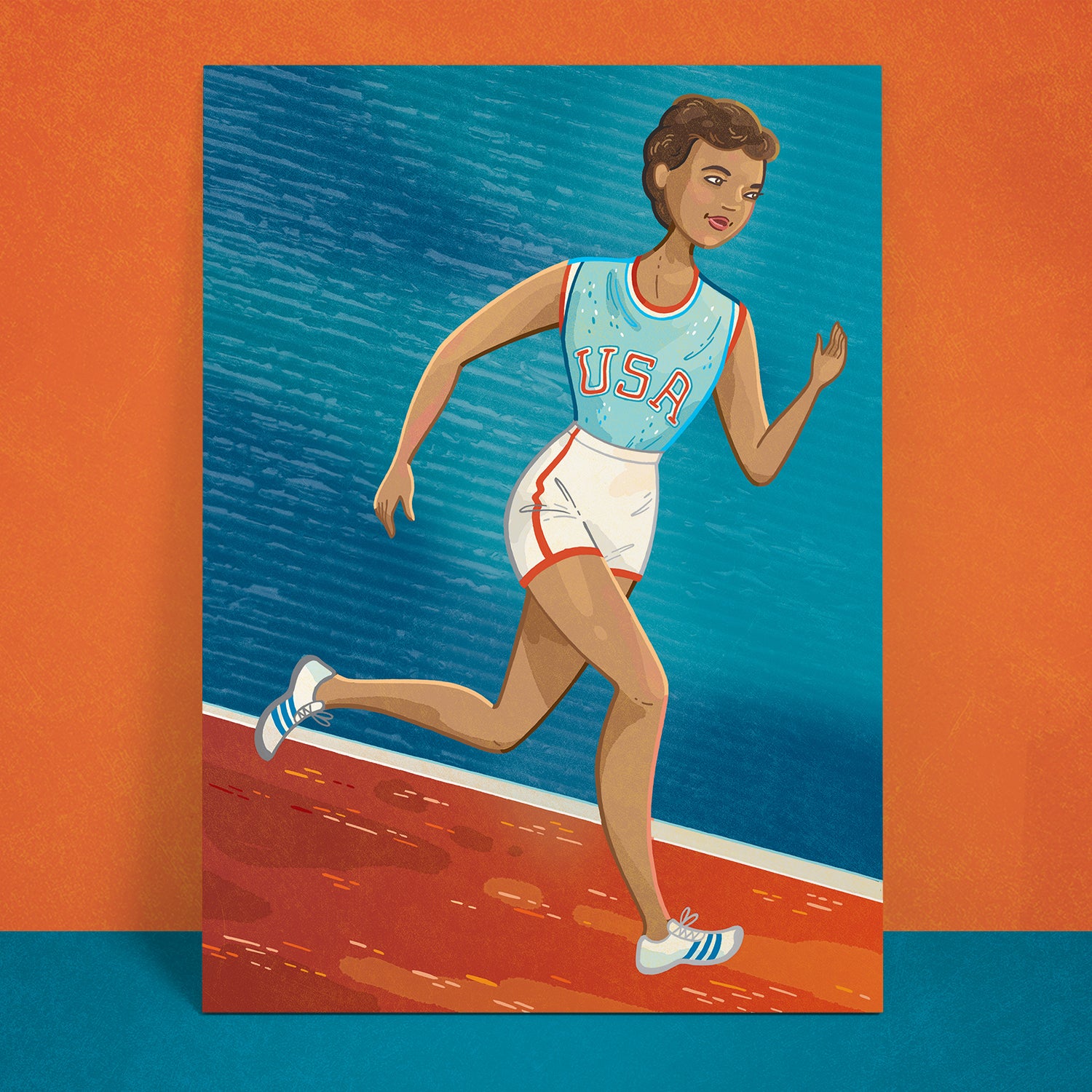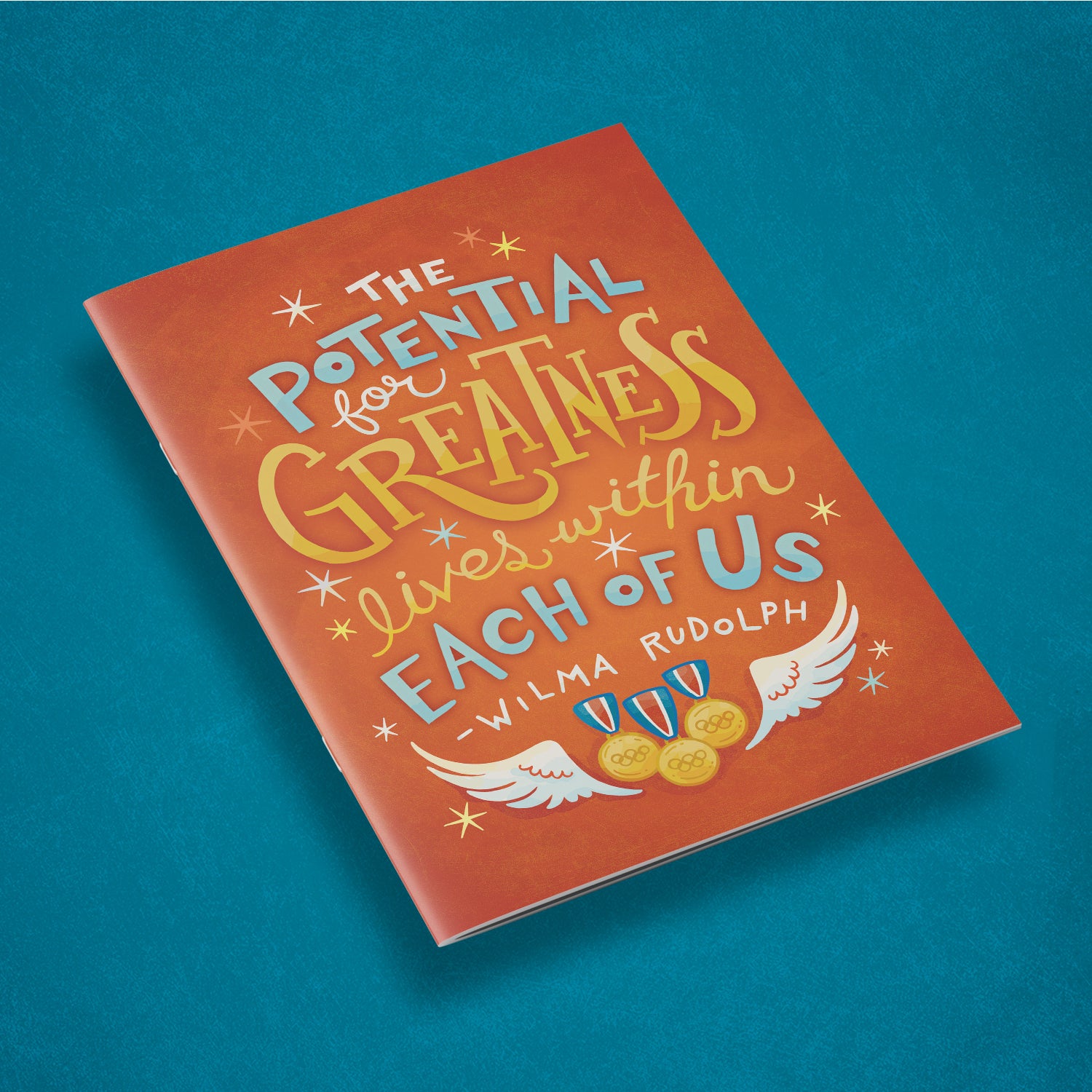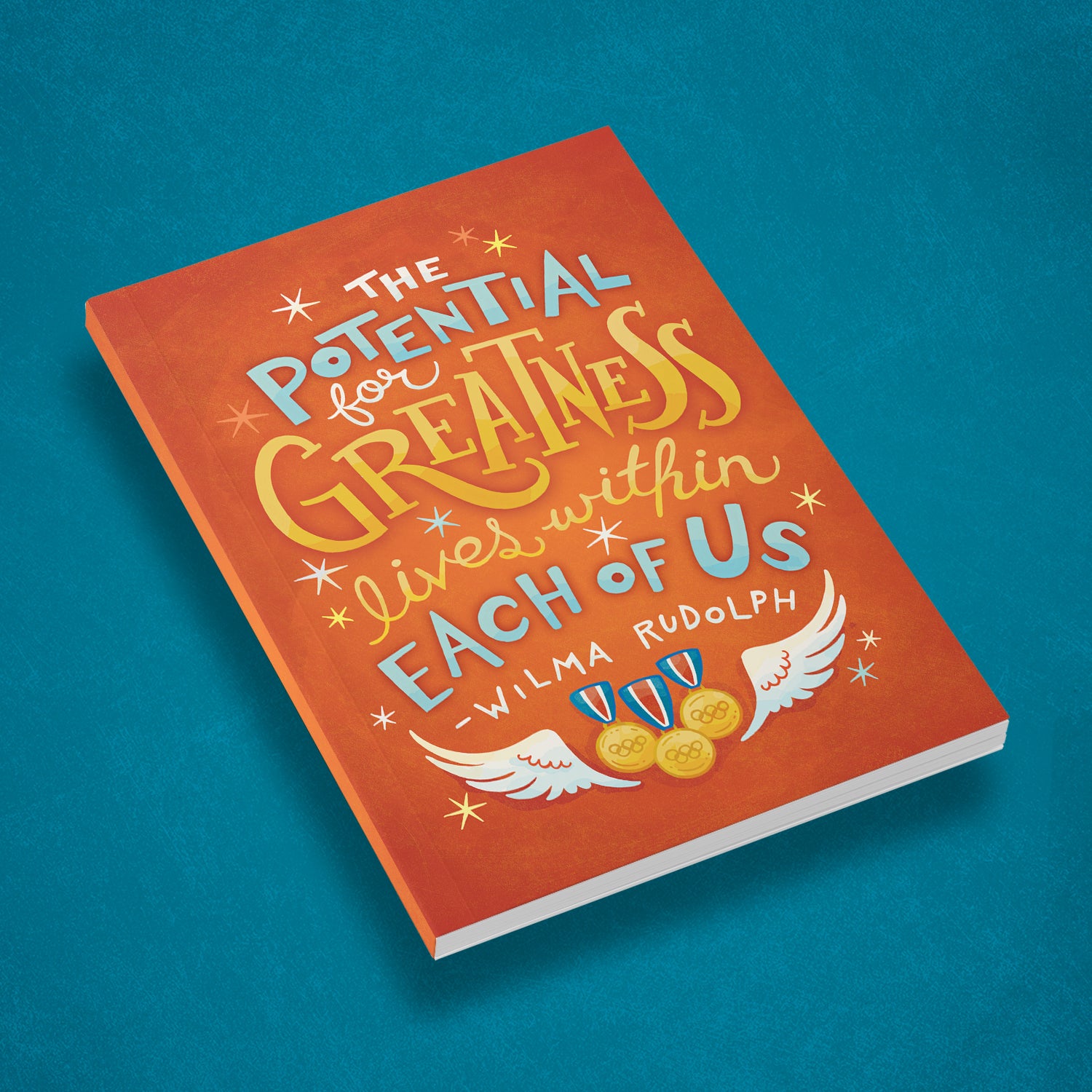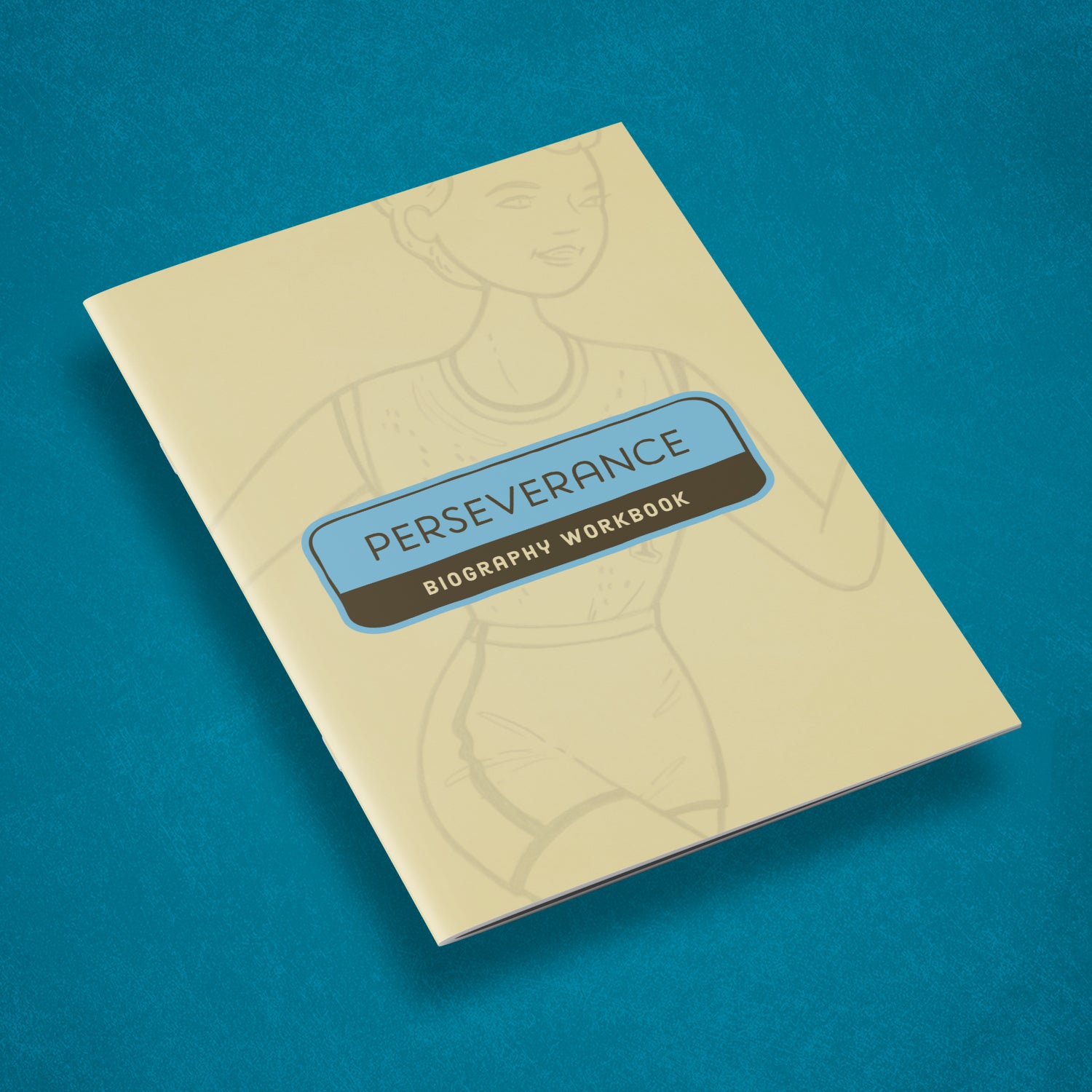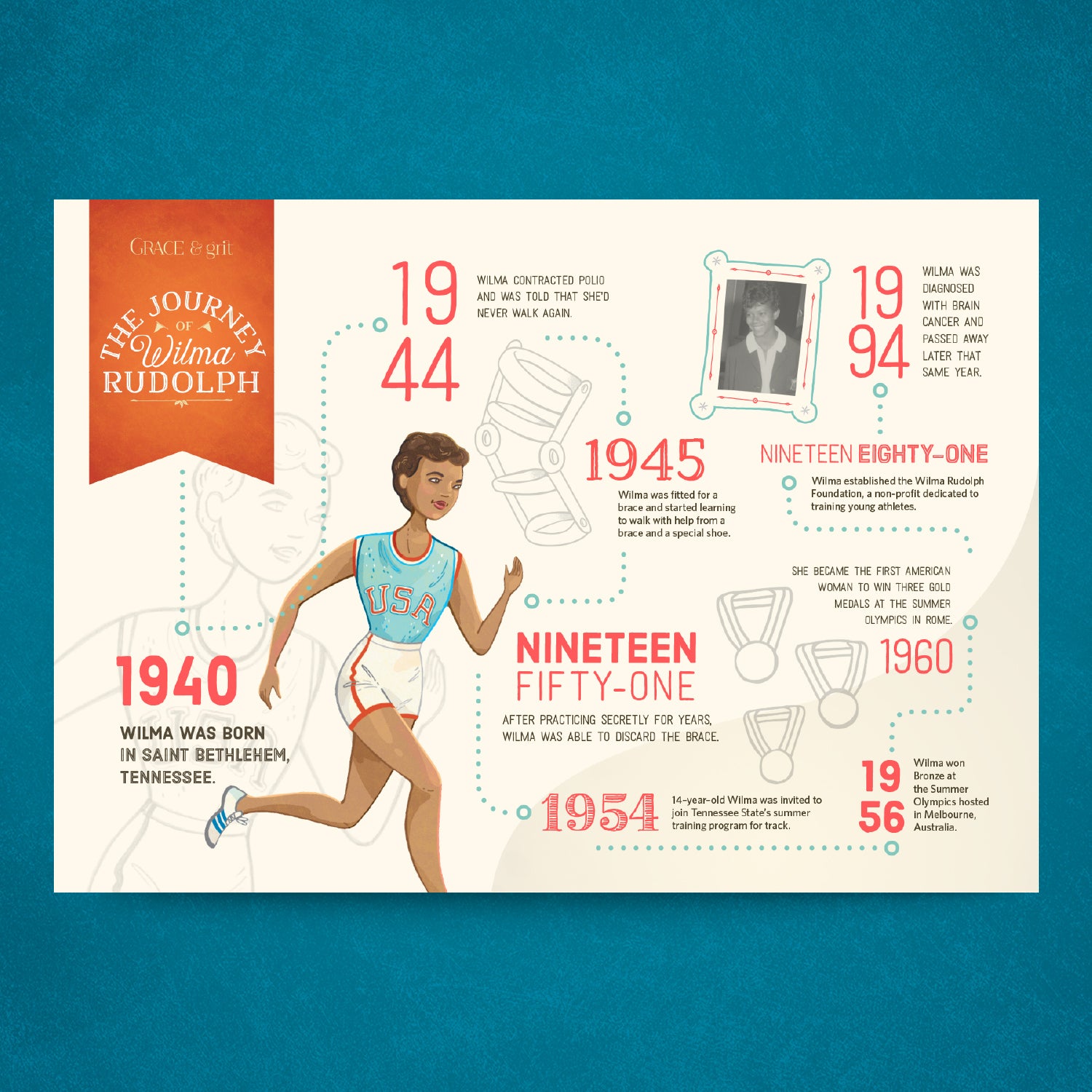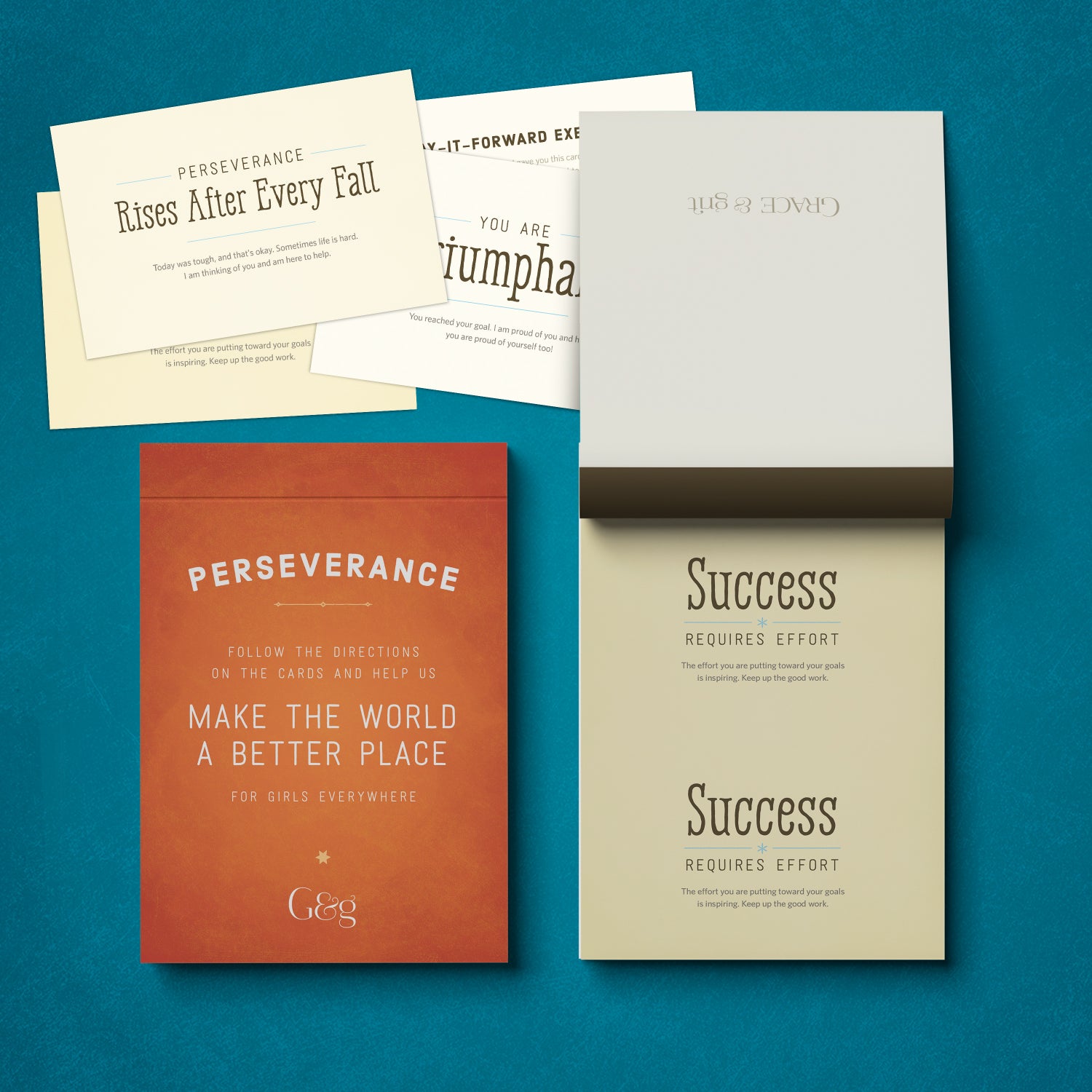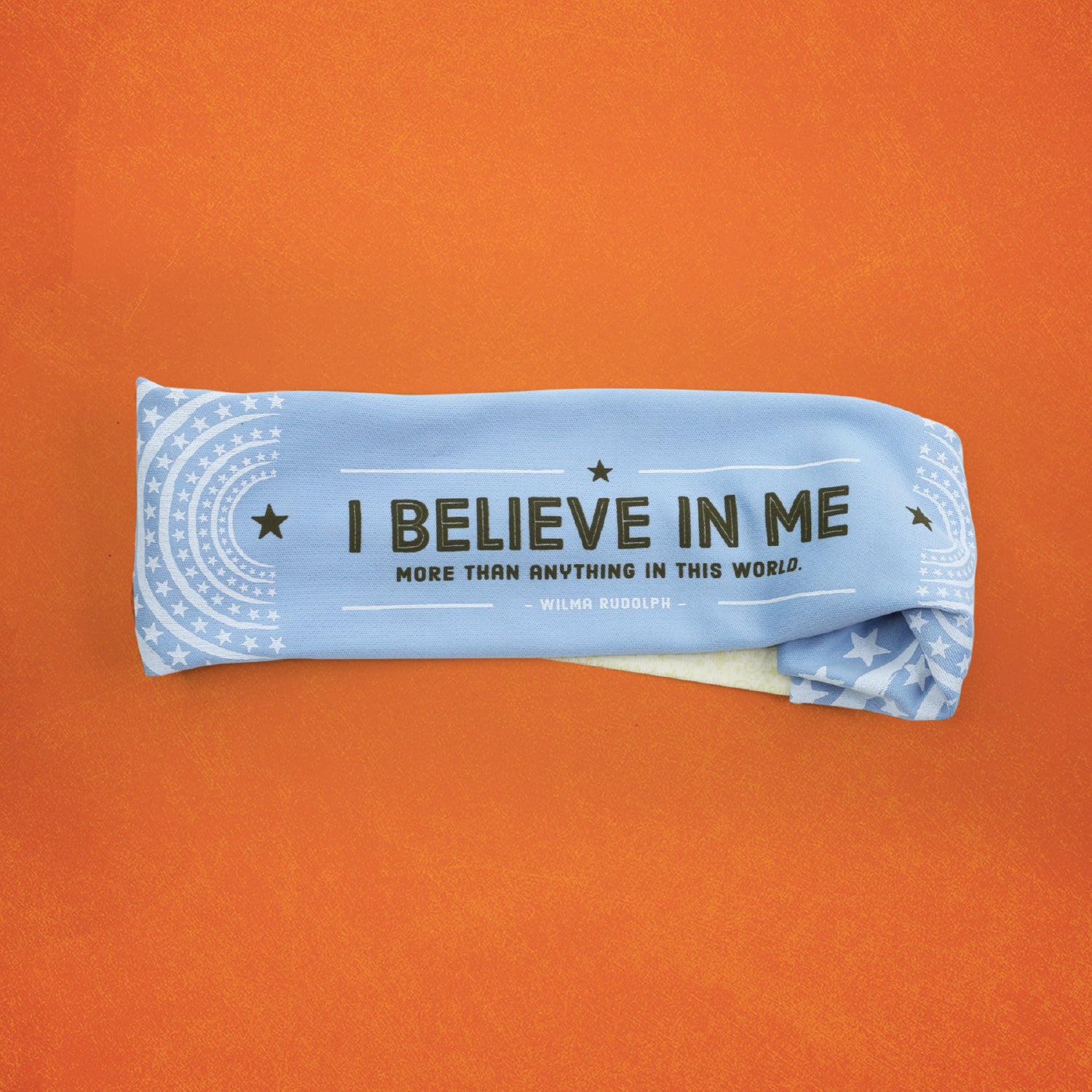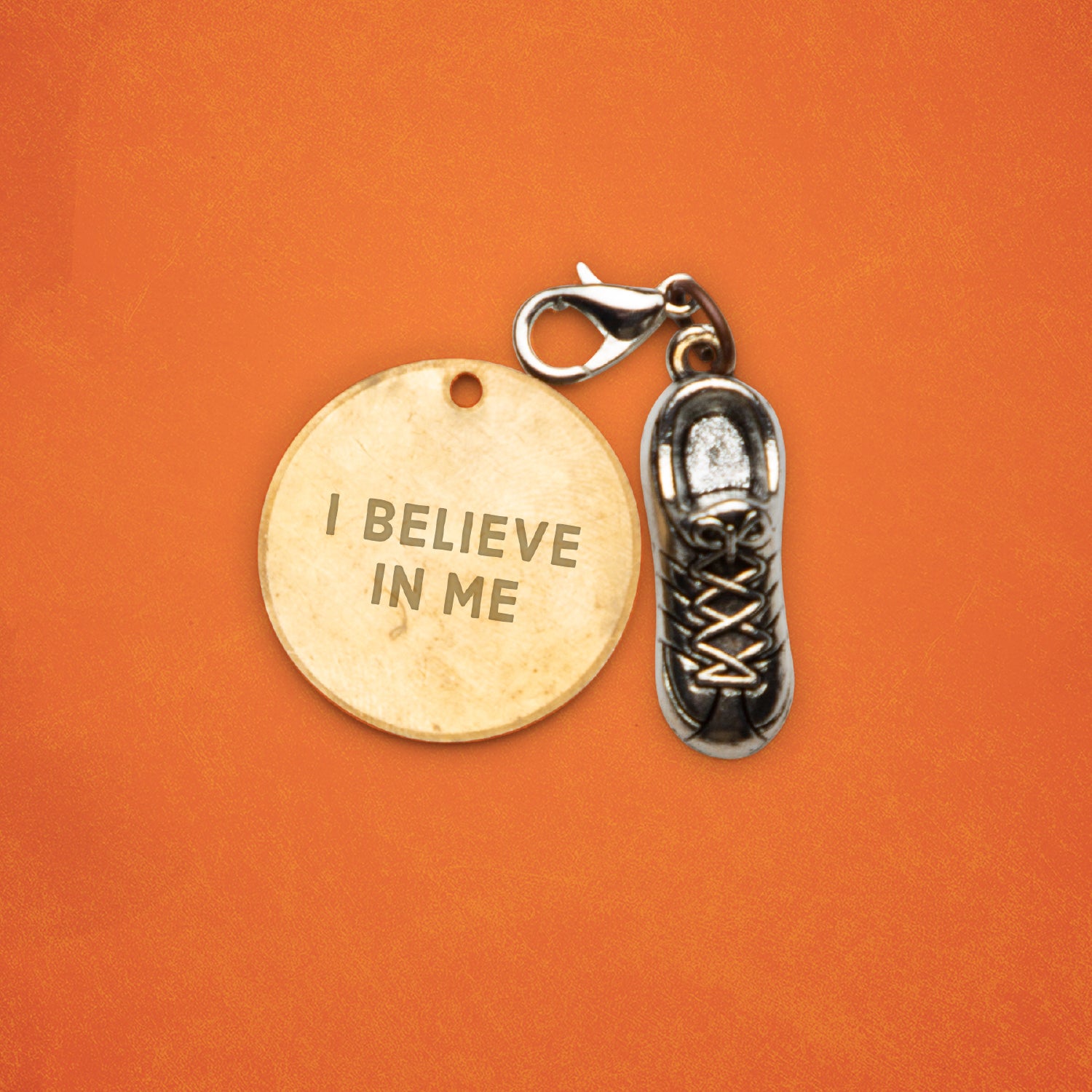Perseverance means doing something despite difficulty or delay in achieving success. Rising up after adversity can be hard sometimes. However, it is an important lesson to learn early on in life. This lesson gives a real-life example of a woman who overcame her physical illness, racism and sexism to achieve personal success. It helps girls understand the importance of perseverance and how to incorporate the character trait into their lives and relationships.
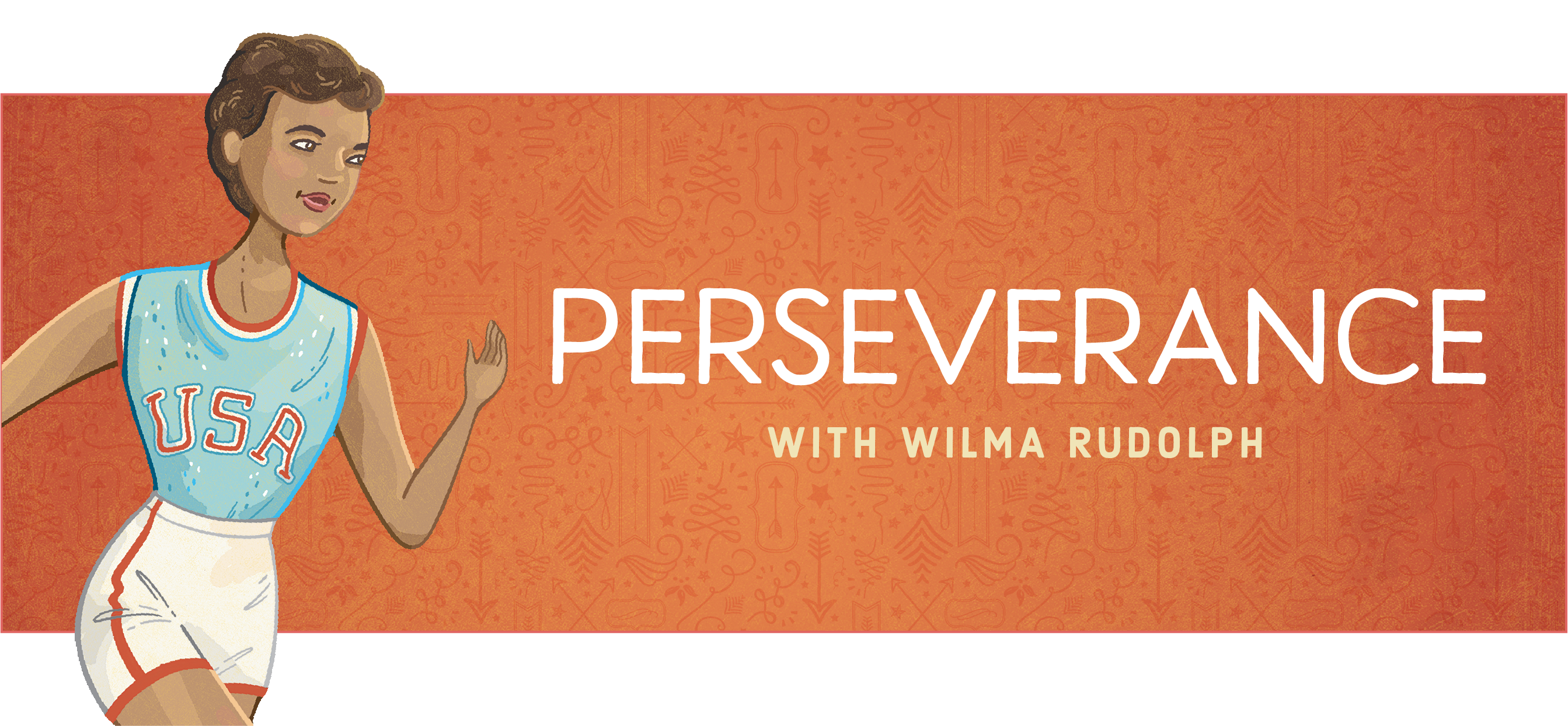
Section One
Preparatory Reading
INTRODUCTION FROM HEATHER STARK: WHY WILMA RUDOLPH?
The first time I heard of Wilma Rudolph was when someone sent me an online video book. I was a school counselor searching for guidance lesson activities to do with my students. I listened to her book, looked her up online, and was so impacted by her story. It was her determination that captured me. Her willingness to keep going despite physical setbacks made her so vulnerable and so worthy of celebrating. She was a woman who decided she would be defined by her triumphs and celebrated the struggle it took to get there.
We all can empathize with her vulnerability. We all have something to overcome: something we don’t like about ourselves, something we long to change, something we let hold us back from fully experiencing life. But something about Wilma made her decide as a young child that her lack of ability would not define her—instead, she would defy it.
Every girl needs the lesson of owning a struggle. Every girl needs to know struggles may shape us, but they don’t define us. Oftentimes, girls and women define themselves by something they are not instead of something they are. But Wilma showed us that struggles can be used to fuel a dream. In fact, it is every girl's prerogative to turn every struggle into a story of grace and grit.
Wilma’s life lesson is powerful. She lived during a time when the world looked at her and saw everything she lacked. To the world, she lacked white skin and two legs that worked—but Wilma responded by showing that she had beautiful black skin and two legs that worked by her standards, and that was all that mattered. She defied expectations, and she refused to be stereotyped.
I chose to tell Wilma’s story to show girls that they can overcome struggles, set their own expectations and chase their own goals. They decide, they take control, they live life on their own terms. The message to share with today’s girls is not to let others define you, tell you that you are slow, or laugh when you want to do something they think you cannot accomplish. Be your own boss. Own yourself and your abilities. Persevere through it all, and only good things will come from your perseverance.
Wilma’s story is a celebration not only of perseverance but also of standing up for yourself. Accepting things may be difficult at first, but as long as you keep yourself moving, your effort will lead to success. Remember, success comes in all forms—both small and big, quiet and loud and everything in between. Wilma has left a bit of her spirit behind as a reminder that “triumph can’t be had without the struggle,” but the struggle is not what defines us.
THE JOURNEY OF WILMA RUDOLPH’S LIFE
Wilma Rudolph was an incredibly busy and determined woman. Perhaps being told at a young age that she would never walk is what kept her in constant motion. Once Wilma conquered polio and learned to walk, she was out to conquer the world! Just take a look:
1940
Wilma was born in Saint Bethlehem, Tennessee.
1944
Wilma contracted polio and was told she would never walk again.
1945
Wilma was fitted for a brace and started learning to walk using it and an orthopedic shoe.
1951
After practicing secretly for years, Wilma was able to discard the brace.
1954
14-year-old Wilma was invited to join Tennessee State University’s summer training program for track.
1956
Wilma won bronze in the Summer Olympics hosted in Melbourne, Australia.
1960
Wilma became the first American woman to win three gold medals in the Summer Olympics in Rome.
1981
Wilma established the Wilma Rudolph Foundation, a nonprofit dedicated to training young athletes.
1994
Wilma was diagnosed with brain cancer and passed away later that same year.
A life that has been explored, fully experienced and pushed to its greatest potential is indeed a life well lived. Wilma fought ’til the end. She persevered until she accomplished everything she wanted to achieve.
CHARACTER TRAIT: PERSEVERANCE
Perseverance is a personality trait required by all people who set goals. It starts in the back of one’s mind and slowly moves its way forward. Perseverance is smart, wise, gritty and strong. It is one of the best friends a young girl can have—the foundation for all accomplishments in life. Perseverance teaches us self-reliance.
Oftentimes, it seems that the best place to be in life is at the top of the mountain. We believe that all the good in life is found at its summit. In school, we talk about getting “As,” and at work, we talk about going for the promotion, getting the pay raise or leading the project—but only focusing on being at the top negates the valley. We often forget that a mountaintop requires careful stepping and balance, and the apex is where the air is thinnest and often a lonely place. Focusing only on the end of the climb invalidates the time spent preparing for it or the time actually spent climbing. Perseverance is both a mental and physical process. Perseverance celebrates the valley before the mountain. It is preparation for the mountaintop; one cannot keep one’s footing at the top without mentally preparing for the climb. Perseverance requires positive self-talk. No struggle is ever conquered with negative self-talk.
Perseverance starts at the lowest point of the climb (or struggle)—the valley. Most people are scared of the valley, but it is where the most fertile soil is and also where oxygen is more readily accessible. A girl can fill her lungs with good air, breathe easily and mentally prepare to conquer the climb ahead. With mind and lungs prepared, all one needs to do is start moving those legs!
This is the beginning of perseverance, the beginning of accomplishing goals and chasing dreams. Perseverance is a reminder of impending reward. But, even before the apex is reached, perseverance teaches trust in oneself, encourages wise choices, instructs when to rest and when to get up and move and reminds one of the importance of self-support. Sometimes girls must be their own biggest cheerleaders when working toward an important goal. The best way to work through just about any struggle is to breathe deeply, ignoring anyone on the sidelines who says the task can’t be done, and own the mountain.
If girls realize their strength and understand what they have overcome, struggles or setbacks suddenly become tiny because they now know the value of perseverance.
The valley is a good place to start any climb when one knows how to breathe through the lowest part of a struggle and move out of the valley to reach the peak. A girl who knows herself and trusts her abilities, a girl with perseverance, can climb that mountain a hundred times.
LESSON CONTENTS
Below are descriptions of each item we offer as part of the Perseverance Theme. Depending on your purchase, some of these may not be applicable.
- Illustrated Portrait
- Our portrait gives life to each of our sets. Wilma's illustration is an action shot. One can see her rock-solid focus, with her eyes set straight ahead. It is a representation of perseverance. It may reflect the moment she realized that her resilience was paying off. The finish line is within reach; she just has to keep putting one foot in front of the other.
- Activity Booklet
- The Activity Booklet highlights the themes in Wilma Rudolph's life. It gives an overview of her journey into perseverance and the legacy she left behind. The booklet includes six thought-provoking activities that guide the readers to apply the lessons of Wilma's life to their own. Girls will understand what perseverance looks, sounds and feels like. More importantly, they will understand how to be their own best advocate.
- Biography
- While the Activity Booklet highlights Wilma's story, the Biography gives a more in-depth telling of her life. The reader will learn how Wilma learned to persevere when times were tough. It tells how she beat the debilitating effects of polio and racism to become a Gold Medal Olympian. The Biography contains personal stories and quotes that reinforce Wilma's perseverance and determination.
- Biography Workbook
- The Biography Workbook allows readers to dive into the lessons Wilma Rudolph's legacy teaches and apply them to their lives. We took the same thought-provoking activities from the Activity Booklet and made them into a companion guide for the Biography. After completing the activities, girls will understand what perseverance looks, sounds and feels like. More importantly, they will understand how to rise after defeat.
- Timeline Poster
- The Timeline Poster is a quick introduction to the life of Wilma Rudolph. One look at it, and the reader can easily spot the milestones in Wilma's life, how she persevered through polio and segregation and how she became an Olympian and role model for others. From birth to death, girls can trace Wilma's path and understand how her accomplishments changed the course of history.
- Play-It-Forward Cards
- Using the Play-It-Forward Cards allows your girls to generalize the lessons they have learned about Wilma Rudolph and perseverance. By following the directions on the cards, they will acknowledge those instances where they see Wilma's spirit in themselves and others in their community. The Play-It-Forward Cards encourage girls to support one another by encouraging and recognizing perseverance in others.
- Accessory
- The Accessory is a gift that reminds girls that perseverance begins with a belief in one's abilities. Perseverance is confidence in action. It's knowing that your greatest ally, defender and advocate is yourself. Wilma's accessory is a headband with her quote, “I Believe in Me More than Anything in This World.” Girls will understand they are worthy of success and are always enough.
- Charm
- The charm is a reminder of Wilma's perseverance. The G&G Charm is a track shoe with a disc that reads, "I Believe in Me." After spending most of her childhood years unable to walk, Wilma overcame polio. She was a star basketball player and an Olympian. With her track shoes on, Wilma was a physical representation of perseverance. But to persevere, one has to believe in themselves first.

